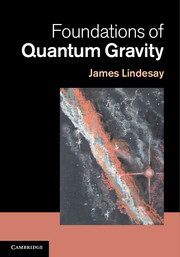Book contents
- Frontmatter
- Contents
- Preface
- Notations and Conventions
- Introduction
- Part I Galilean and special relativity
- Part II General relativity
- Appendix A Addendum for Chapter 1
- Appendix B Addendum for Chapter 2
- Appendix C Addendum for Chapter 3
- Appendix D Addendum for Chapter 4
- Appendix E Addendum for Chapter 5
- Appendix F Addendum for Chapter 7
- Appendix G Addendum for Chapter 8
- References
- Index
Preface
Published online by Cambridge University Press: 05 July 2013
- Frontmatter
- Contents
- Preface
- Notations and Conventions
- Introduction
- Part I Galilean and special relativity
- Part II General relativity
- Appendix A Addendum for Chapter 1
- Appendix B Addendum for Chapter 2
- Appendix C Addendum for Chapter 3
- Appendix D Addendum for Chapter 4
- Appendix E Addendum for Chapter 5
- Appendix F Addendum for Chapter 7
- Appendix G Addendum for Chapter 8
- References
- Index
Summary
This book is the result of decades of efforts by the author to understand physics at its most basic foundations, and to construct models that can address some of the unanswered questions about gravity, quantum mechanics, and the spectrum of fundamental particles. It is felt that foundational explorations should examine the conceptual and philosophical basis of a discipline. As such, less emphasis was placed upon the mathematics of complex calculations, while more emphasis was placed upon the consistencies and critiques of basic premises, in the preparation of this book. As a scientist, there is often a tendency to be drawn towards mathematical and formal pursuits, simply because of the beauty and elegance of mathematics. Such approaches sometimes bypass difficult conceptual approaches and thought experiments, or develop speculative formulations just because of their elegance. This book attempts to establish a balance towards the exploration of basic concepts and puzzles.
The prior book on black holes by Lenny Susskind and myself serves as an introduction to quantum physics and relativity for static geometries, as well as information in horizon physics. However, some of my more recent explorations indicate that qualitative modifications in descriptions of the physics occur once dynamics has been incorporated. This then calls into question any intuitions from static geometries that have been used to imply that those very geometries cannot be static. This book incorporates dynamic, spatially coherent geometries, as well as expanding upon the well-established foundations of the prior work.
- Type
- Chapter
- Information
- Foundations of Quantum Gravity , pp. vii - ixPublisher: Cambridge University PressPrint publication year: 2013

